Neuroendocrine Tumor (NET) of the Stomach — Embolization or Chemoembolization: treatment in the Best Hospitals in the World
Treatment prices are regulated by national law of the corresponding countries, but can also include additional hospital coefficients. In order to receive the individual cost calculation, please send us the request and medical records.
Stomach Cancer Treatment
- Stomach (gastric) cancer
- Diagnosis and conservative treatment with 1 course of chemotherapy
- Surgical partial resection of the stomach
- Surgical complete resection of the stomach and further plasty of intestinal tissue
- CRS and HIPEC - hyperthermic Intraperitoneal chemoperfusion
- Embolization or chemoembolization
- Therapy with Lutetium-177-DOTATATE (Lu-177)
- Chemotherapy
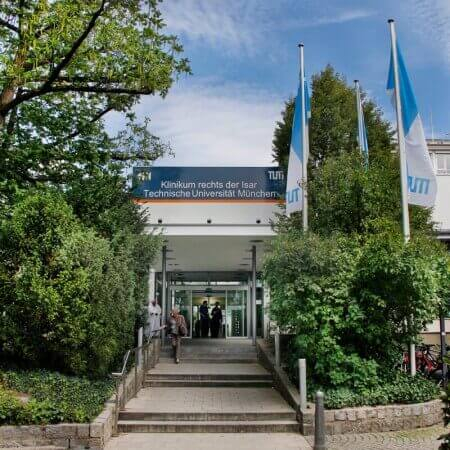
Department of Interventional Radiology
The Department of Interventional Radiology offers the full range of imaging examinations, as well as innovative image-guided minimally invasive techniques for the treatment of tumors, vascular diseases and internal pathologies (for example, CT, MRI, PET-CT, SPECT). The department's doctors have deep knowledge and colossal experience in the field of interventional radiological methods of treatment, which represent an excellent alternative to open surgical interventions. Despite the high level of technical equipment and the presence of advanced computerized systems, the focus is always on the person with his individual needs. Compliance with current clinical protocols and high professionalism of the department's specialists contribute to the successful clinical practice, as well as the reputability of the department among the best medical facilities of this kind in Germany.
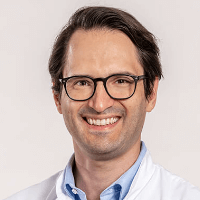


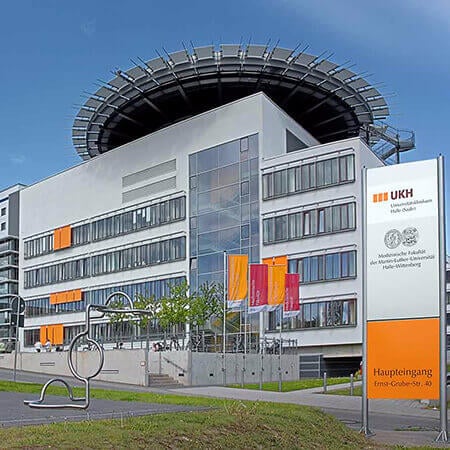
Department of Interventional Radiology and Neuroradiology
The Department of Interventional Radiology and Neuroradiology offers a full range of advanced imaging diagnostics and minimally invasive treatments on both an inpatient and outpatient basis. The department has state-of-the-art medical equipment for imaging tests such as X-ray, computed tomography, magnetic resonance imaging, digital subtraction angiography, and mammography. The medical facility also performs many highly effective interventional therapeutic procedures under image guidance, which in many cases allow patients to avoid traumatic open surgery. For example, the department successfully performs local fibrinolysis, thrombectomy, percutaneous transluminal angioplasty, hemostasis, transarterial chemoembolization, uterine artery embolization, and other procedures. The department's neuroradiologists specialize in brain and spinal cord imaging and the treatment of central nervous system disorders. Interventional neuroradiology focuses on the treatment of carotid artery stenosis, brain aneurysms, arteriovenous malformations, dural fistulas, subdural hematomas, brain tumors, skull base and spinal tumors, and chronic back pain. The department's medical team has extensive clinical experience in their areas of expertise. The specialists are guided by the recommendations of the German Society for Interventional Radiology and Minimally Invasive Therapy (DeGIR) and the German Society for Neuroradiology (DGNR), which helps to achieve the best results.




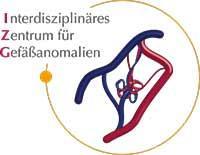
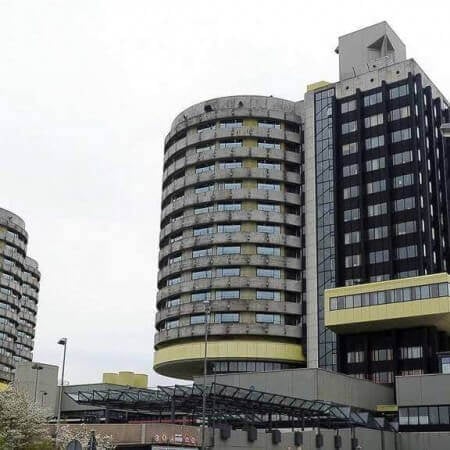
Department of Adult and Pediatric Diagnostic, Interventional Radiology, Neuroradiology
The Department of Adult and Pediatric Diagnostic, Interventional Radiology, Neuroradiology is one of the best institutions of its kind in Germany and offers patients the full range of radiological studies and imaging-guided minimally invasive therapy. The department’s scope of tasks also includes imaging diagnostics in children of all age groups, detection and invasive treatment of cerebral vascular pathology (neuroradiology). Patient care is provided both on an inpatient and outpatient basis.






Neuroendocrine tumors (NETs) are neoplasms that produce hormones. They can develop in different organs, but in most patients they are found in the lungs, colon, pancreas, and stomach. Neuroendocrine tumors are not always cancer. Benign or intermediate neoplasms develop in the stomach more often than malignant ones. The most dangerous tumors are G3. They grow rapidly, often recur after removal, and metastasize.
The stomach has certain cells from which a tumor can grow:
- ECL cells – produce histamine.
- G cells – produce gastrin.
- D cells – secrete somatostatin.
- А cells – responsible for the production of glucagon.
- Enterochromaffin cells – produce serotonin.
- X cells – responsible for the production of ghrelin.
The neoplasms that develop from these cells are not considered cancer. They are called carcinoids, that is, tumors that look like cancer. They are divided into three types. The first includes benign tumors, the second – intermediate (locally metastatic), and the third type includes malignant ones. They behave like cancer – they grow deep into tissues, as well as give regional and distant metastases. Approximately 75% of neuroendocrine tumors are benign, 20% are malignant, and intermediate ones are the rarest – they are detected in 5% of patients.
Content
- Treatment principles for neuroendocrine tumors
- In what cases can embolization be used
- Embolization before surgery
- Embolization for unresectable cancer
- How is the procedure performed?
- Why is it worth undergoing treatment abroad
- Treatment in Europe with Booking Health at an affordable price
Treatment principles for neuroendocrine tumors
For the treatment of patients with neuroendocrine tumors of the stomach, the surgical method is considered the main one. All operations are divided into two groups:
- Endoscopic.
- Abdominal.
Endoscopic operations are performed without skin incisions. The doctor inserts the instruments through the mouth into the patient's stomach. Surgery options can be as follows:
Electrocoagulation of tumor foci can be used when their size is from 1 to 3 mm. The doctor "cauterizes" small tumor foci with high fever. Doctors can sometimes use other energies instead of electrocoagulation: radiofrequency and laser methods.
Endoscopic mucosal resection can be used if the neoplasm has a size of 0.4 to 1 cm. The doctor resects a part of the affected mucosa.
Submucosal resection can be used for neoplasms from 1 cm. The doctor removes the mucous membrane to its full depth, lifting it above the submucosal layer. In the future, this area heals with the formation of a scar, as with gastric ulcer.
Abdominal operations:
- Gastrectomy is the removal of the entire stomach.
- Stomach resection is the removal of its part.
- Antrumectomy is a variant of resection with the removal of the part of the stomach near the duodenum (gastrin is produced here, and after its secretion is reduced, further tumor growth stops).
- Atypical resection is the removal of a small fragment of the stomach together with a neuroendocrine tumor.
Endoscopic and abdominal operations can be combined. For example, in order not to have to remove the stomach completely, the doctor may remove only part of the organ. In the remaining part, small tumor foci can be eliminated with the help of an endoscopic intervention. In addition, in the presence of metastases in the lymph nodes, antrumectomy can be combined with endoscopic treatment.
Surgery is the most common method for treatment of patients with neuroendocrine tumors, since it is actually the only one capable of providing a cure for pathology.
When choosing the option for performing the surgical procedure, the doctor takes into account the size of the tumor, their number and grade, as well as lymph node involvement. Whenever possible, preference is given to endoscopic operations. Stomach resection has to be performed infrequently. However, with the presence of unfavorable prognostic factors for neuroendocrine tumors, doctors have to resort to more radical treatment options.
Most patients will not need any other treatment other than surgery. Less commonly, hormonal therapy with somatostatin analogues is used.
The most prognostically unfavorable neuroendocrine tumors are third grade neoplasms (G3). They are treated with the same methods as cancer. Basically, these are stomach resection, removal of the entire stomach, lymph node dissection. Chemotherapy can rarely be used, as the response rate does not exceed 20-40%.
Doctors in developed countries use new treatment methods that allow even high-grade tumors to be controlled for a long time: targeted therapy, radionuclide therapy, embolization, and chemoembolization.
In what cases can embolization be used
Basically, embolization can be used for neuroendocrine tumors of high, less often – intermediate grade. Here are some of the situations when it can be applied:
- Prior to surgery, to shrink the tumor.
- In inoperable patients, for local control of neoplasm, relief of symptoms, cessation of bleeding.
- In case of liver metastasis. In this event, doctors perform embolization of the branches of the hepatic artery for local control of metastatic foci.
Embolization to suppress the primary tumor in the stomach may not be performed in all patients, but only in those who have the blood vessels feeding the neoplasm. If the neuroendocrine tumor receives nutrition from many small sources, then the procedure cannot be performed.
Embolization before surgery
At the time of detection, neuroendocrine tumors sometimes grow to large sizes. In this case, it is advisable to reduce their size prior to the operation in order to:
- Make the surgical procedure possible.
- Reduce blood loss during surgery.
- Perform the operation in a smaller volume (for example, remove not the entire stomach, but only part of it), if possible.
- Reduce the risk of cancer recurrence.
Cancer can sometimes be considered inoperable at the time of diagnosis. Nonetheless, medical procedures, including chemoembolization, help reduce the size of the neuroendocrine tumor. As a result, patients who were previously refused surgery can receive surgical treatment and have every chance of curing a deadly disease.
Embolization for unresectable cancer
Due to its large size, local spread, or the presence of distant metastases, surgical treatment may be considered inappropriate. In this case, the cure of cancer becomes impossible, but this does not mean that the treatment does not make any sense: it is aimed at increasing the duration and quality of life, relieving symptoms and preventing complications.
Chemoembolization can be used as one of the options for local control of the tumor. After the procedure, it decreases in size by 25-35%, and then grows more slowly due to the lack of blood supply. The procedure can be repeated several times, if required. The treatment is supplemented with systemic drug therapy.
Many patients with malignant neuroendocrine tumors and even some patients with intermediate neuroendocrine tumors develop liver metastases. To control them, doctors perform hepatic artery chemoembolization. The branches of the artery are covered with microspheres containing chemotherapy drugs.
How is the procedure performed?
The treatment method is minimally invasive. The doctor does not need to make large incisions in the abdomen. He gains access to the blood vessels through a small incision in the patient's leg or arm. The catheter is inserted into the femoral or radial artery. The doctor then reaches abdominal vessels.
Arteriography is performed repeatedly during the procedure. This is a diagnostic manipulation. The doctor injects a contrast agent through a catheter inserted into the artery. A series of X-rays are then made over a few seconds. This is how the doctor determines how the arteries pass and where the blood flows through them. This is necessary in order to:
- Assess the blood supply to the stomach and surrounding organs, primarily to the liver and pancreas.
- Check if embolization is possible.
- If possible, determine which vessels have to be closed with emboli.
- What vessels need to be protected from the ingress of the embolysate in order to avoid complications associated with impaired blood supply to other organs.
The arteries that feed the stomach differ from patient to patient. The places of origin of vessels, their number and degree of development differ.
The neuroendocrine tumor can be located in different parts of the stomach. Accordingly, it receives blood from various sources. When performing the procedure, doctors mostly close the lumen of the following arteries:
- Left or right gastric arteries.
- Gastroepiploic artery.
- Gastroduodenal arteries.
If the tumor is large and covers almost the entire stomach, the doctor can close the lumen of several arteries at once or choose the one that delivers the most blood to the neoplasm.
After diagnosis, the doctor injects the embolysate into the target vessels. Depending on the purpose of the treatment, different options for performing this procedure may be applied:
Oily chemoembolization. This is the most common option. The doctor injects an oily emulsion, which consists of lipiodol and chemotherapy drugs. This procedure provides only a temporary closure of the lumen of the arteries feeding the neuroendocrine tumor. Nonetheless, this time is enough for a part of the tumor to die from a lack of blood supply. Oily chemoembolization is mostly performed prior to surgery for total or partial removal of the stomach. The operation is performed 1-2 weeks after embolization.
Embolization with coils or gelatin sponge. The procedure implies a mechanical closure of the lumen of the arteries. When used separately, the procedure serves as an option for palliative treatment. The technique allows doctors to stop bleeding. If necessary, the procedure can be performed emergently. Usually this is embolization in its pure form, without chemotherapy.
If chemotherapy is additionally used, then it consists in a single-stage intra-arterial infusion of the drug. But this approach is rarely used: its disadvantage is that chemotherapy drugs do not stay in the stomach for a long time.
Prior to surgery to remove the neuroendocrine tumor, the main option for performing the procedure is oily chemoembolization. However, its disadvantage is that it does not eliminate gastric bleeding. Therefore, in patients with bleeding, treatment is supplemented with vascular coil embolization.
Embolization with microspheres. Drug-saturable microspheres are a relatively new treatment that was only developed in the 21st century. It is suitable for all patients: those waiting for surgery or undergoing palliative cancer treatment. Microspheres close the vascular lumen forever. Within a few weeks, cytostatics are released from them, damaging cancer cells. Studies show that microspheres provide a higher response rate with less toxicity from regional chemotherapy.
If the doctor conducts embolization with microspheres or oily chemoembolization, then the embolysate can enter non-target vessels and close their lumen. This will lead to ischemia (impaired blood supply) of the internal organs, which can result in serious complications. To avoid such situations, doctors in Europe carefully examine the arterial bed in the area of the stomach, liver and pancreas. If there is a risk of the embolysate entering the non-target arteries, then their lumen is temporarily closed.
Why is it worth undergoing treatment abroad
Many patients prefer to undergo treatment in the developed European countries, as in this case they can expect the best results with minimal health risks. In most cases, neuroendocrine tumors are completely cured. Even patients with advanced stages of cancer can achieve good treatment outcomes.
There are several reasons for you to undergo neuroendocrine cancer treatment abroad:
- Extensive experience in arterial embolization for stomach tumors: few hospitals can successfully perform this procedure.
- The latest methods of chemoembolization are applied, including the use of drug-saturable microspheres.
- Superselective chemoembolization is performed: doctors try to inject emboli as close to the tumor as possible in order to avoid ischemia (lack of blood supply) to the healthy tissues.
- If necessary, doctors protect non-target blood vessels to avoid emboli and complications from neighboring organs.
- In the case of liver metastasis, simultaneous embolization of the vessels supplying the metastatic foci and the primary tumor is possible.
- Chemoembolization can be successfully combined with other treatment options for neuroendocrine tumors: surgery, radiation therapy, drug therapy.
In Europe, patients receive not only effective and safe treatment, but also comfort, quality care, full medical supervision and recovery after procedures and operations. All patients receive adequate analgesic, concomitant and symptomatic therapy to reduce the risk of complications and improve treatment tolerance.
Treatment in Europe with Booking Health at an affordable price
To undergo treatment in one of the European hospitals, please use the services of the Booking Health company. On our website, you can find out the cost of treatment in different hospitals, compare prices and book a medical care program at a favorable price. Arterial chemoembolization in European hospitals will be easier and faster for you, and the cost of treatment will be lower.
Please leave your request on our website. Our employee will contact you and advise you about treatment in Europe. Booking Health will take care of the organization of your trip. We will provide the following benefits for you:
- We will choose a hospital for treatment in Europe, whose doctors specialize in the treatment of neuroendocrine tumors of the stomach.
- We will help you overcome the language barrier, establish communication with your attending physician.
- We will reduce the waiting time for the start of the medical care program and book a doctor's appointment on the most suitable dates.
- We will reduce the price. The cost of treatment in European hospitals will be lower due to the lack of additional coefficients for foreign patients.
- We will take care of all organizational issues: documents for entering the country, transfer from the airport, hotel, interpreter, etc.
- We will prepare a program and translate medical documents. You do not have to repeat the previously performed diagnostic procedures.
- We will provide communication with the hospital after treatment in Europe.
- If necessary, we will organize additional diagnostic examinations of patients and treatment in European hospitals.
- We will buy medicines abroad and forward them to your native country.
- We will help you keep in touch with the hospital and the doctor after treatment in Europe.
You will receive treatment from the best doctors in the world. The Booking Health employees will help reduce the cost of treatment and solve all organizational issues, and you will only have to focus on restoring your health.
Authors:
The article was edited by medical experts, board certified doctors Dr. Nadezhda Ivanisova and Dr. Sergey Pashchenko. For the treatment of the conditions referred to in the article, you must consult a doctor; the information in the article is not intended for self-medication!
Sources:

